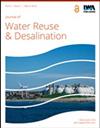Fluorescence analysis for water characterization: measurement processes, influencing factors, and data analysis
IF 2.3
Q2 Environmental Science
引用次数: 3
Abstract
Fluorescence analysis is a sensitive and selective method that provides abundant information and does not result in sample destruction. This technology is widely used in the detection of dissolved organic matter in the environment. Some challenges with fluorescence analysis are its higher sensitivity so that it is sensitive to background signals, the difficulty of extracting useful information, and the complexity and diversity of analytical methods. This review summarizes recent applications of fluorescence analysis in water research for the characterization of pollutants, evaluation of water treatment processes, and monitoring of emerging contaminants such as drugs, disinfection by-products, and toxicity. Two-dimensional fluorescence and excitation–emission matrix fluorescence analysis methods are discussed, along with their advantages and disadvantages, and application scope. Methods for sample processing, instrument calibration, and data analysis are proposed. This review is an important source of information for the application of fluorescence technology in water research such as the analysis of emerging contaminants.水表征的荧光分析:测量过程、影响因素和数据分析
荧光分析具有灵敏度高、选择性好、信息丰富、不破坏样品等特点。该技术广泛应用于环境中溶解性有机物的检测。荧光分析面临的挑战是灵敏度高,对背景信号敏感;提取有用信息困难;分析方法的复杂性和多样性。本文综述了荧光分析在水研究中的最新应用,包括污染物的表征、水处理工艺的评价以及新出现的污染物(如药物、消毒副产物和毒性)的监测。讨论了二维荧光和激发-发射矩阵荧光两种分析方法的优缺点和适用范围。提出了样品处理、仪器校准和数据分析的方法。本文综述为荧光技术在水研究中的应用提供了重要的信息来源,如分析新出现的污染物。
本文章由计算机程序翻译,如有差异,请以英文原文为准。
求助全文
约1分钟内获得全文
求助全文
来源期刊

Journal of Water Reuse and Desalination
ENGINEERING, ENVIRONMENTAL-WATER RESOURCES
CiteScore
4.30
自引率
0.00%
发文量
23
审稿时长
16 weeks
期刊介绍:
Journal of Water Reuse and Desalination publishes refereed review articles, theoretical and experimental research papers, new findings and issues of unplanned and planned reuse. The journal welcomes contributions from developing and developed countries.
 求助内容:
求助内容: 应助结果提醒方式:
应助结果提醒方式:


